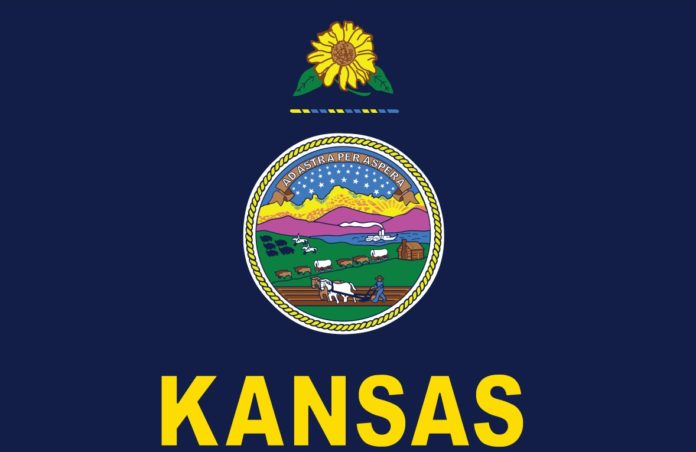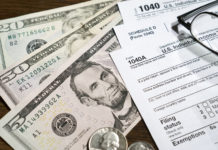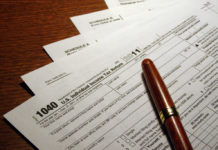State fiscal analysts presented a stable-to-positive outlook for the state on Friday as Gov. Laura Kelly starts to pore over the numbers that will help guide her in deciding whether to veto a $1.55 billion tax bill on her desk.
The overall revenue estimate was increased $45.9 million for fiscal years 2024 and 2025 combined, leaving the state with an ending balance of about $2.7 billion in ’24 and nearly $2 billion in ’25.
The state is projected to have an additional $1.7 billion in its rainy-day fund for 2024 and about $1.8 billion in the following year.
Kelly administration officials have cautioned that the ending balances are inflated by about $1 billion because of enhanced, one-time Medicaid matching funds from the federal government during the pandemic.
Fiscal analysts forecast 2024 as stable while reporting an uptick in 2025. They revised their estimates downward for 2024 by $100.3 million – or 1% – because tax receipts have been down about 2% for the first nine months of the current fiscal year.
Meanwhile, they increased their estimates upward for fiscal 2025 by $146.2 million – or 1.4% – partly because of a moderately improved economic forecast and corporate tax cuts associated with a major development project that have been pushed back a year.
“There is a recurring theme throughout the estimating cycle for both state receipts and the state’s economy that they are stable,” said Shirley Morrow, the acting director of the Kansas Legislative Research Department.
Morrow cited a list of positives for the state: Inflation is predicted to be steady or decline, jobs are increasing, there are plenty of jobs available and the state’s gross domestic product is expected to rise this year and next.
Estimates for inflation held steady at 3% for fiscal year 2024 and was reduced to 2.5% from 2.6% for fiscal 2025.
Meanwhile, estimates for nominal Kansas gross domestic product was increased to 5.4% from 4.7% in 2024 and increased to 4.7% from 4.6% in 2025.
There are still potential risks to the state’s health, including elevated inflation, sustained high interest rates and geopolitical turmoil that could drive down the price of commodities, especially in the agricultural sector.
“The story is not a whole lot of shifting in the revenue forecast,” said Adam Proffitt, the state’s budget director and secretary of administration.
The numbers released late Friday afternoon will likely figure into whether the governor signs the tax bill that the Legislature sent her just before its regular session ended.
A budget profile released on Friday showed the state with an ending balance of about $2.7 billion in 2024 and almost $2 billion for fiscal year 2025.
The profile included the first year of tax cuts enacted under the bill approved by the Legislature.
Proffitt said there is still work that needs to be done before he can make a recommendation to the governor about the tax plan.
“These numbers are 30 minutes old. We’re still wrapping our heads around this,” Proffitt said during the late afternoon news conference on Friday.
“We’ll need to sit down and make sure that our out-year profiles are ticked and tied,” he said. “At that point, I’ll make the appropriate recommendation and ultimately it’s her decision as to what to do.
“She’s been consistent with wanting to make sure that revenues meet expenditures in the out years. We’ll see what that brings next week.”
The governor was elected twice campaigning on protecting the state’s fiscal health from the financial turmoil that gripped the state when tax cuts were enacted under former Gov. Sam Brownback’s administration.
The governor’s budget division ran its own budget profile that included the tax bill.
Making certain assumptions about spending, revenue growth and other tax bills that might be enacted, the profile showed the state could be nearly $400 million in the red by 2029 albeit with a nearly $2 billion rainy-day fund.
Meanwhile, Republicans leaders in the Legislature said the new estimates demonstrate that the state can afford the tax bill, which is expected to cost about $1.55 billion over three years.
The new estimates make “clear that the bipartisan tax relief passed overwhelmingly by the Legislature is both sustainable and long overdue,” House Speaker Dan Hawkins said.
“It’s time to provide the people of Kansas with property, income, Social Security, and food sales tax relief. The numbers today should make signing the sustainable bipartisan tax
relief bill an easy ‘yes’ for the governor,” Hawkins said.
The governor’s office declined to comment early Friday night, deferring to the comments the budget director made hours earlier.
Senate President Ty Masterson said the new estimates also show that the state can afford the tax plan.
“The stable revenues reflected in the consensus revenue estimates demonstrate Kansas is in good shape from a fiscal standpoint and remove any remaining excuse for the governor not to sign the bipartisan tax relief bill,” Masterson said.
“We look forward to her signature.”
















